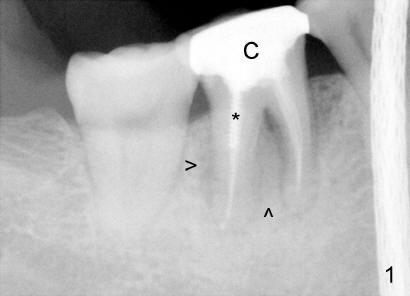
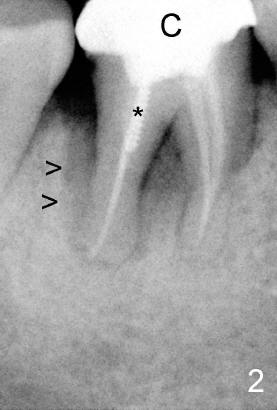
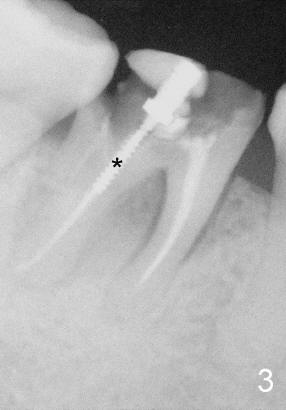
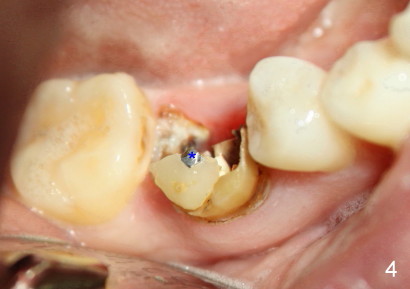
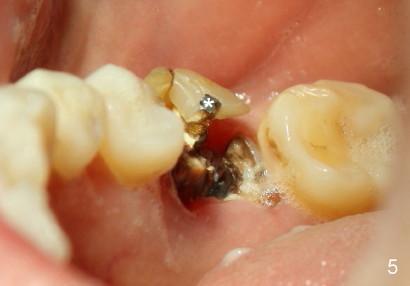
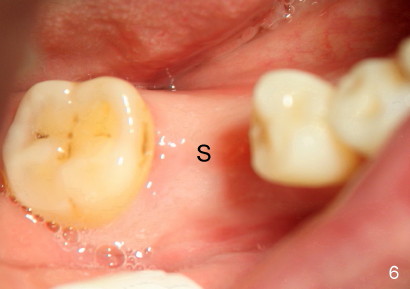
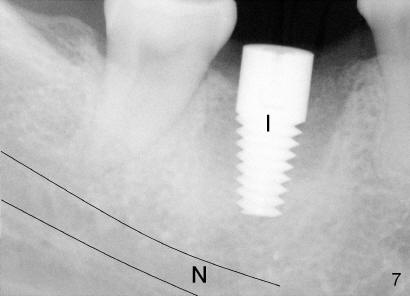
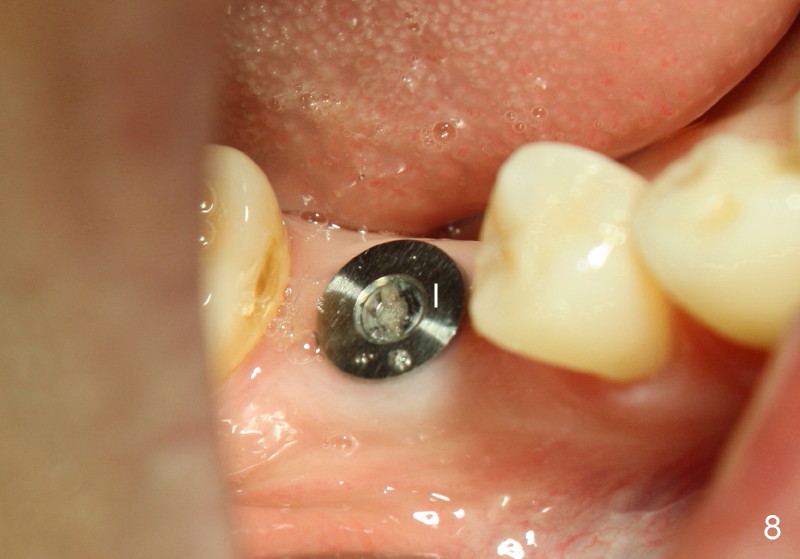
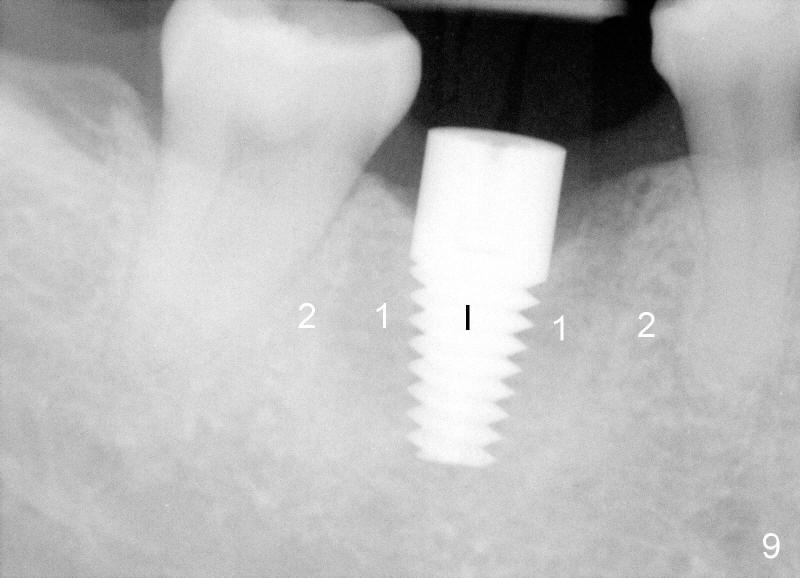
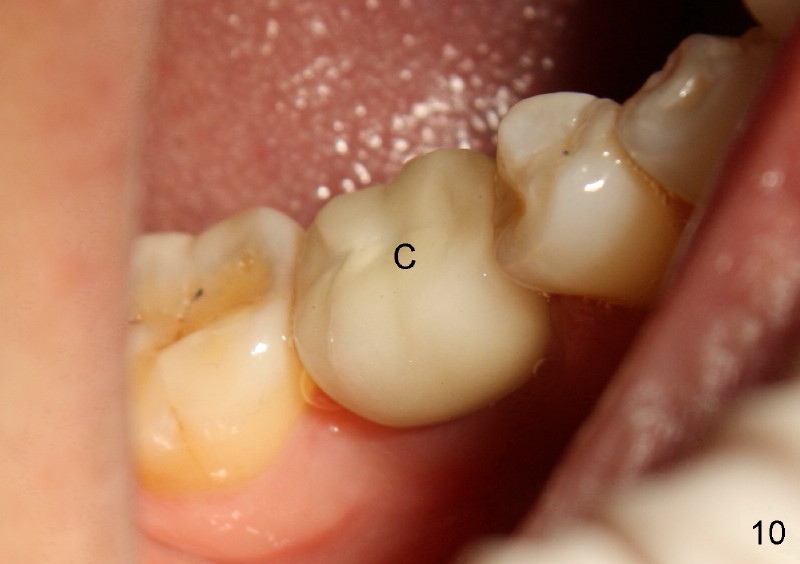
 |
 |
 |
 |
 |
|
 |
 |
|
 |
 |
|
 |
||
Dental Education Lecture: Give Broken Tooth a New Look
Mrs. Lu has been our patient for 4 years. One bottom molar with a crown (Fig.1 C) has pretty severe root infection (arrowheads: >) in X-ray and should be extracted. But she wanted to hang on with it, because the tooth did not bother her. Two years later, porcelain chipped off the crown (not shown). She wanted to get a new crown. But updated X-ray appears to show that root infection gets worse (Fig.2: >). It is not smart to invest on this pretty bad tooth with a new crown. Life kept on. One day, the crown became loose by its own, because the tooth is badly broken down (Fig.3-5). This time Mrs. Lu has no other choice but extraction.
Four months later, she returns for implant. She reports that it is very tiring to chew only on the other side of the mouth. She does not want to have a bridge to replace the extracted tooth. Her own experience tells her that once the tooth is ground for crown or bridge, it is more likely getting worse later on.
The extraction socket heals nicely (Fig.6: S, as compared to Fig.4,5). This is the beginning of a new life for the broken/lost tooth. With her cooperation, a proper-sized implant is placed (Fig.7: I). The bottom of the implant has quite a distance from the nerve (N).
In a few months, Mrs. Lu is going to have a new crown over the implant. For insurance purpose (i.e., to save money), Mrs. Lu returns to office 9 months after implant placement. The implant (I in Fig.8) heals with the gums very well. There is no infection. X-ray shows that the density of the bone immediately next to the implant (1 in Fig.9, originally root area) increases relative to the region labeled as 2 (compare to Fig.7). In brief, the implant is ready to work. In a few weeks, Mrs. Lu gets a new crown (Fig.10, as compared to Fig.4). The new life will keep going on and on. We will keep you posted.
By the way, asterisk (* in Fig.1-5) is called dental post, which is supposed to help keep a crown in place. When the tooth is broken down, the post does not do much of its job.
Xin Wei, DDS, PhD, MS 1st edition 04/24/2011, last revision 09/28/2012